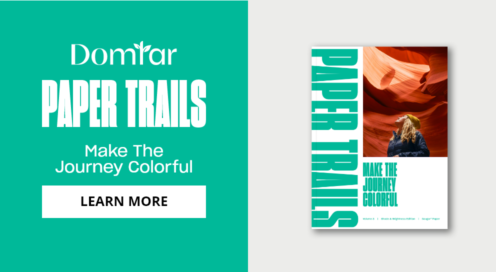Accessibility in Canada: Designing beyond AODA standards in Ontario
Written by Meggan van Harten RGD, Design de Plume and Design de Plume Inc.
Highlighting the relevant sections of the AODA for designers, Meggan Van Harten RGD shares resources to go beyond what is required for compliance.
Legislation is the floor, not the ceiling, when it comes to making accessible designs. While it's important to be aware of legislation like the Accessibility for Ontarians with Disabilities Act (AODA), it’s not the be-all and end-all of doing accessible design work.
Within the legislation, there are 5 standards. As designers, there is one main area in particular to be aware of: Information and Communication Standard.
“The Information and Communications Standards of the AODA list rules for organizations to create, provide and receive information and communications that people with disabilities can access. The standards give all people an equal chance to learn and be active in their communities.”
This standard highlights that accessible formats and communication supports need to be available to people with disabilities, covering everything from presentations, websites to printed materials.
Within the standard, there is a section dedicated to websites. Websites for organizations that have to meetAODA compliance are required to achieve Level AA under the Web Content Accessibility Guidelines (WCAG) 2.0. WCAG covers topics such as creating websites that are responsive, interacting well with screen-reader software and embedding other pieces of content such as a video in an accessible way. It’s a rich tool with a lot of good information, but it is not written in a very user-friendly format, making it daunting to get into.
Ultimately, the expectation of making things more accessible is that you will be able to communicate with more people. However, simply relying on legislation alone to inform your accessible design process will only scratch the surface of what is possible with creating connections through accessible designs.
We can innovate so much more when we consider the needs of the audience above the needs of a checkbox. When we focus too much on legislation alone or meeting a compliance standard, we forget that our designs are intended to create connection with the world around us.
If you’re looking to learn more and don’t know where to look, refer to the RGD's Accessibility Handbook or register for upcoming events, including 2 half-day workshops on Nov 1 led by our Design de Plume team. One of the most helpful ways I’ve found to learn more about accessibility and different perspectives is by connecting with other accessibility-minded professionals. There are so many amazing folks, but to name a few:
Gaps persist between the needs of Indigenous people with disabilities and legislation like the AODA. While the AODA is a significant step towards improving accessibility, it may not fully address the unique cultural and contextual requirements of Indigenous communities. Indigenous people often face distinct accessibility challenges rooted in the erasure of their histories, languages and cultural practices.
The legislation may not adequately consider these factors, leading to a disconnect between compliance standards and the realities of Indigenous Peoples with disabilities. Additionally, Indigenous communities, especially those in remote areas, may encounter barriers related to infrastructure, such as limited access to high-speed internet, which can further exacerbate communication accessibility gaps. Bridging these divides requires a more nuanced and culturally-sensitive approach, involving meaningful engagement with Indigenous communities and a commitment to tailoring accessibility solutions to their specific needs and circumstances. The legislation that exists is a great starting point for organizations. It holds them accountable for performing inclusive actions for bringing people with disabilities in, but it shouldn’t be treated as if it’s the final success goal post or “the gold standard”. As designers, we have an opportunity to design with an empathetic lens and to include people with disabilities to consult and build with us (with compensation) on our products and services. The standards are not a substitution for true, meaningful engagement.
The Accessible Canada Act intends to establish a barrier-free Canada by 2040. Through the Accessibility in Canada series, the RGD highlights the extent of application of accessible design regulations in Provinces across Canada.
Read:
Accessibility in Canada: A new day for web accessibility in Manitoba
Accessibility in Canada: British Columbia

Meggan van Harten RGD
Design de Plume
Meggan Van Harten, RGD is Co-CEO for Design de Plume, an Indigenous and women-owned creative agency that designs inclusive and accessible solutions that resonate. She brings equity and accessibility to the heart of the business. Bringing a decade of experience in design to her leadership role, Meggan sets the vision for projects, establishes standards, and builds both business and client strategies that lead to greater impact. She recognizes the value that accessibility work creates for people, and projects, with proven results. She provides insight and implementation guidance for content writers, designers, and organizations looking to adopt accessibility into their core and ensures that compliance standards and real-world experience align in unique and innovative ways.
Tag
Related Articles


Meggan van Harten RGD, Design de Plume Inc.














